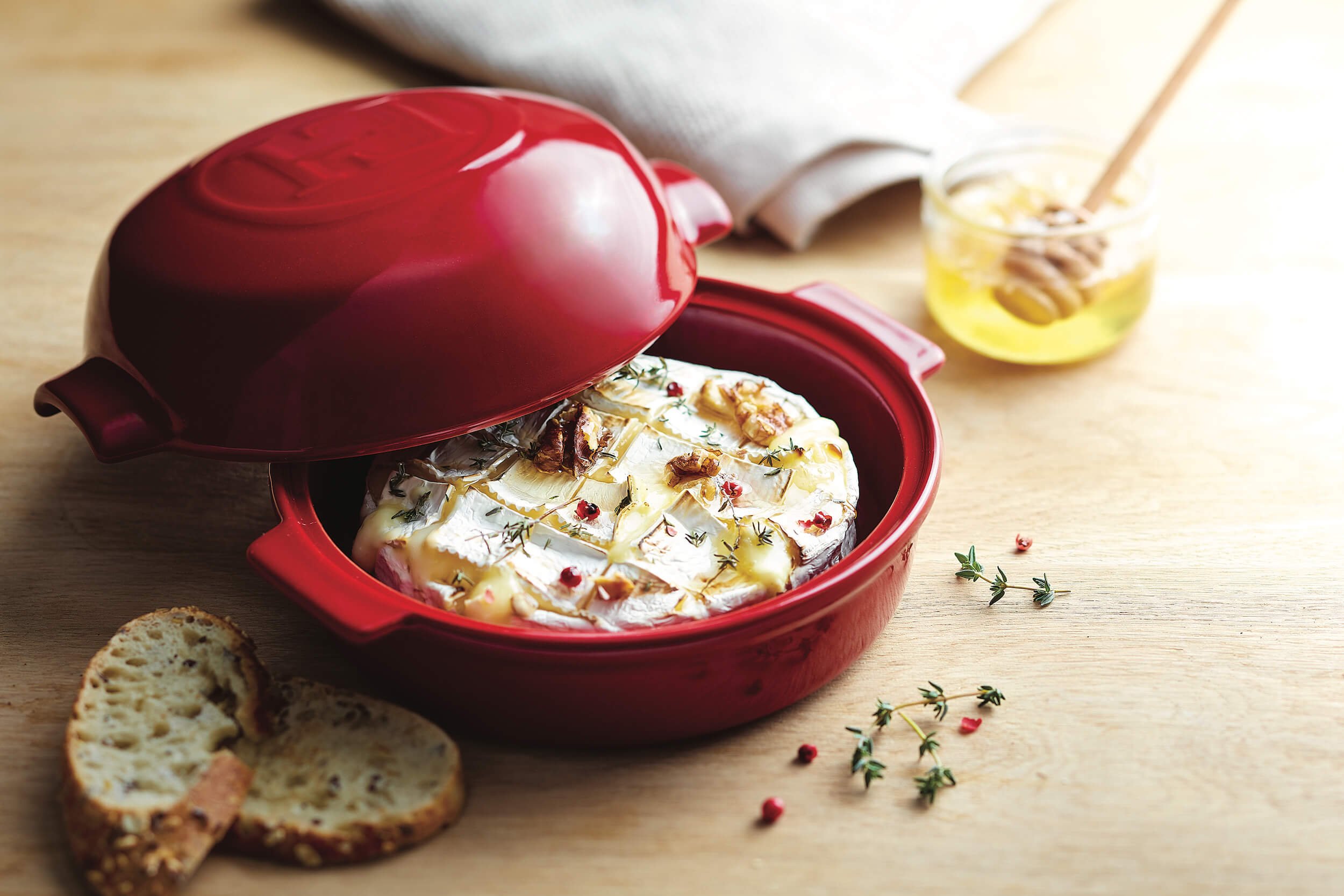Cheddar is one of the most popular cheeses in the world and one of my favorites. It originally came from Somerset, in England but is now produced in many parts of the English speaking world and beyond. But only 14 makers are licensed to use the EU Protected Designation of Origin “West Country Farmhouse Cheddar” which indicates it's still made in the traditional way.
The process for making cheddar is similar to other cow's milk cheeses, with the addition of a unique process that has taken on the name "cheddaring." Slabs of curd are stretched, then piled on top of each other to help drain the whey. This helps to harden the cheese and develop acidity and flavor. Farmhouse cheddars are traditionally wrapped in cloth and then aged. Good English cheddar should be buttery and nutty in flavor and should have a soft crumbly texture. Cheddar improves with age, developing those crunchy crystals of calcium lactate you find in other aged cheese, like Parmigiano Reggiano.
I recently got a chance to try some Westminster cheddar, and am happy to report that it is very widely available in supermarkets. Westminster aged cheddar cheese is made on England’s oldest cheddar making farm in North Somerset only 15 miles from the village of Cheddar. The Barber family has been making cheddar since 1833 and is reputedly to be the oldest cheddar making family in the world. The milk from their cheddar comes from Holstein Freisian cows. The cows are grass fed for 8-9 months of the year depending on the weather ( free from growth hormones, RBGH or RBST). As with all cheeses, the flavor is very much an expression of what the animals eat. What sets their cheddar apart? They hand turn the cheddar and it's not blast chilled, this lets the starter culture have more time to develop. They also mature the cheese at a slightly higher temperature to let the cheese mature again and develop in flavor.
While the popularity of cheddar has a lot to do with the influence of the expansion of the British Empire and milk rationing during WWII (cheddar was virtually the only cheese made in England during the war), it's versatility in cooking is also undeniable. If you are enjoying aged cheddar, it's good to at least try it on its own. Here are my tasting notes:
Aged 10 months, it's buttery, creamy texture that melts and lasts on the finish, much sharper than domestic "extra sharp" cheddar with a richer flavor but not acidic.
Sharp
Aged 12 months, it is both sharper and drier than the 10 month, but still very creamy with no bitterness, a bit fruity.
Vintage
Aged15 months, it's even sharper, but less salty, little bit of crunch from the crystals, nutty.
Farmer's Reserve
Aged 2 years it represents only 2% of total production. It's the driest, with more crunch, complex but still creamy and earthiness.
Some of my favorite ways to use cheddar:
* Grilled cheese sandwiches
* Served with my favorite chutney and bread
* In macaroni and cheese with Spanish peppers
* In cheddar biscuits
* As a topping on chipotle chili
* In fondue
* In a souffle
* In cream of broccoli soup
* In corn chowder
Disclaimer: My thanks to Westminster Cheddar for supplying me with samples.








